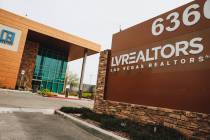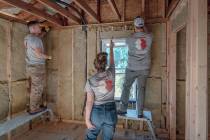HOA overreaches with rules on antennas
Q: I am purchasing a home in a community of detached, single-family homes. I want to “cut the cord” with cable TV and install a small antenna. It would be mounted on the eave at the back of the house and extend above the roofline about 2 feet. The homeowners association management firm has said I must apply for permission from the HOA board, which requires: drawings, signed concurrence from neighbors, an indemnity form signed by me and the contractor, a $25 fee and at least a month for review.
I question whether any of this can be required under the Federal Communications Commission Over-the-Air Reception Devices Rule.
A: Your association cannot charge a fee. A 30-day wait period would be in violation of the unreasonably delay regulation. An indemnity document signed by you and the vendor would not violate the FCC regulations. The drawings could possibly be prohibited if there are unreasonable increases in cost. Whether or not neighbors approve the installation has no bearing.
HOAs were once free to adopt and enforce restrictions and regulations on satellite dishes and other types of antennas. The Telecommunications Act of 1996, a federal law, preempted all state, local and other non-governmental restrictions regulating satellites and antennas, which included homeowner associations. In October 1996, the Federal Communications Commission adopted the Over-the-Air Reception Devices Rule or OTARD rule.
The OTARD rule prohibits community associations from creating restrictions that impair the installation, maintenance or use of antennas used to receive video programming. This restriction applies to video antennas including direct-to-home satellite dishes that are less than one meter (39.37 inches) in diameter, TV antennas and wireless cable antennas. The rule prohibits: (1) unreasonably delay or prevent installation, maintenance or use; (2) unreasonably increase the cost of installation, maintenance or use; or (3) preclude reception of an acceptable quality signal.
The OTARD rule allows homeowner associations to enforce restrictions that do not impair the installation, maintenance or use of the types of antennas as well as restrictions needed for safety issues. The OTARD rule does not apply to common areas that are owned by a community association, or jointly by condominium homeowners. Common areas may include the roof or exterior wall of a multiple dwelling unit.
Homeowner associations may still require an owner to comply with rules governing the means, method and location of the antenna installation, as long as no unreasonable delay or cost is involved and an acceptable quality signal can be obtained. Restrictions could include requiring compliance with building codes, screening, unobtrusive placement, painting certain parts of the antenna, camouflage and other reasonable steps to ensure the safety of the installation and minimize the visual effect on the community.
There are three criteria used by the FCC in determining whether an association restriction impairs an owner or viewer’s ability to access satellite or antenna signals: (1) unreasonably delays or prevents installation, maintenance or use of; or (2) unreasonably increases the cost of, installation, maintenance or use of; or (3) precludes a subscriber from receiving an acceptable quality signal from one of these antennas. Architectural restrictions that affect but do not impair a viewer’s ability to receive signals are permissible.
Restrictions that unreasonably delay or prevent installation, maintenance or use of an antenna are also prohibited.
The FCC has found that approval processes of the location of the antenna, even if expedited, cause an unreasonable delay. In addition, any type of administrative fees imposed is an unreasonable cost. Therefore, an association cannot charge a fee.
In contrast, an association regulation that requires antennas be placed in a location not visible from the street would be permitted if the placement allows reception of an acceptable quality signal, and does not unreasonably delay or increase the cost of installation, maintenance or use.
Barbara Holland is a certified property manager, broker and supervisory certified association manager. Questions may be sent to holland744o@gmail.com.

















